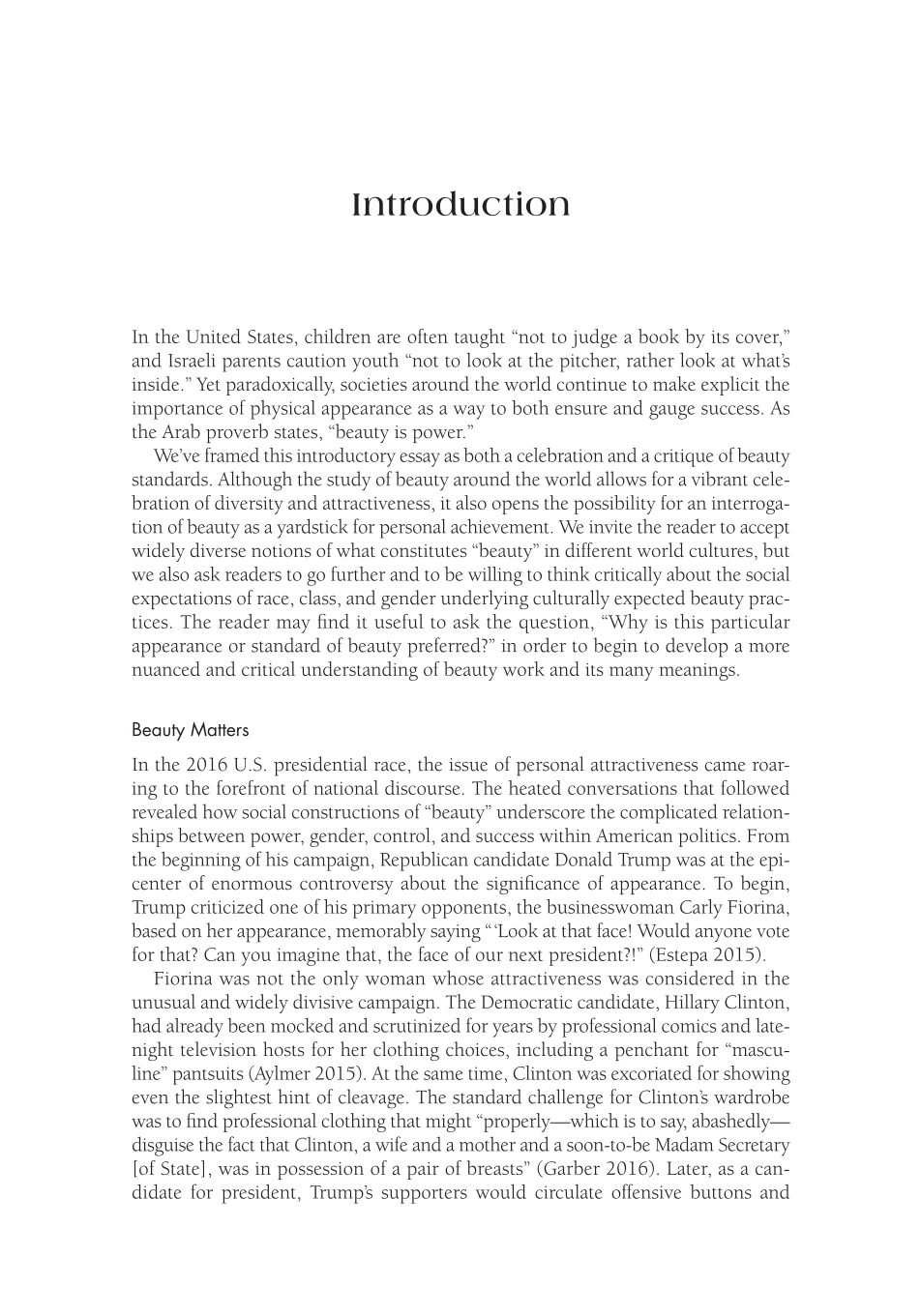In the United States, children are often taught “not to judge a book by its cover,”
and Israeli parents caution youth “not to look at the pitcher, rather look at what’s
inside.” Yet paradoxically, societies around the world continue to make explicit the
importance of physical appearance as a way to both ensure and gauge success. As
the Arab proverb states, “beauty is power.”
We’ve framed this introductory essay as both a celebration and a critique of beauty
standards. Although the study of beauty around the world allows for a vibrant cele
bration of diversity and attractiveness, it also opens the possibility for an interroga-
tion of beauty as a yardstick for personal achievement. We invite the reader to accept
widely diverse notions of what constitutes “beauty” in different world cultures, but
we also ask readers to go further and to be willing to think critically about the social
expectations of race, class, and gender underlying culturally expected beauty prac-
tices. The reader may find it useful to ask the question, “Why is this particular
appearance or standard of beauty preferred?” in order to begin to develop a more
nuanced and critical understanding of beauty work and its many meanings.
Beauty Matters
In the 2016 U.S. presidential race, the issue of personal attractiveness came roar-
ing to the forefront of national discourse. The heated conversations that followed
revealed how social constructions of “beauty” underscore the complicated relation-
ships between power, gender, control, and success within American politics. From
the beginning of his campaign, Republican candidate Donald Trump was at the epi-
center of enormous controversy about the significance of appearance. To begin,
Trump criticized one of his primary opponents, the businesswoman Carly Fiorina,
based on her appearance, memorably saying “ ‘Look at that face! Would anyone vote
for that? Can you imagine that, the face of our next president?!” (Estepa 2015).
Fiorina was not the only woman whose attractiveness was considered in the
unusual and widely divisive campaign. The Democratic candidate, Hillary Clinton,
had already been mocked and scrutinized for years by professional comics and late-
night television hosts for her clothing choices, including a penchant for “mascu-
line” pantsuits (Aylmer 2015). At the same time, Clinton was excoriated for showing
even the slightest hint of cleavage. The standard challenge for Clinton’s wardrobe
was to find professional clothing that might “properly—which is to say, abashedly—
disguise the fact that Clinton, a wife and a mother and a soon-to-be Madam Secretary
[of State], was in possession of a pair of breasts” (Garber 2016). Later, as a can-
didate for president, Trump’s supporters would circulate offensive buttons and
Introduction

























































































































































































































































































































































































































































